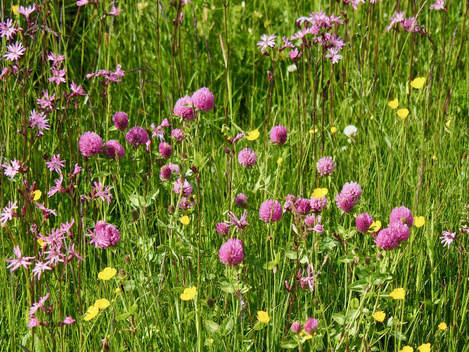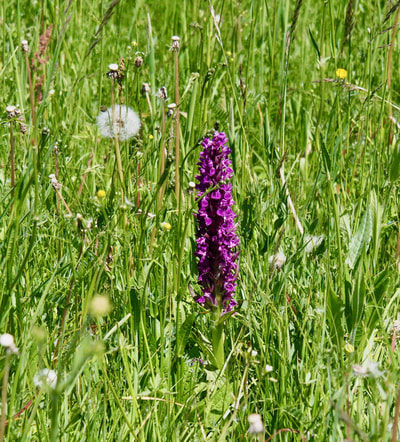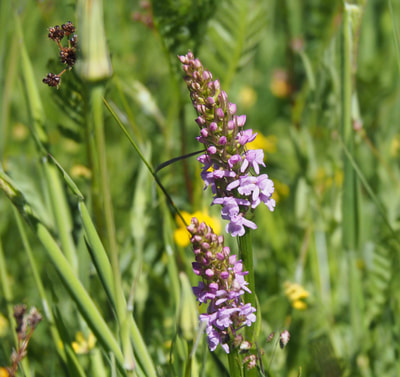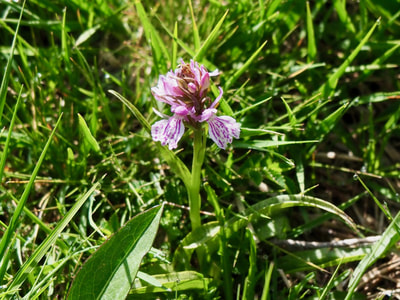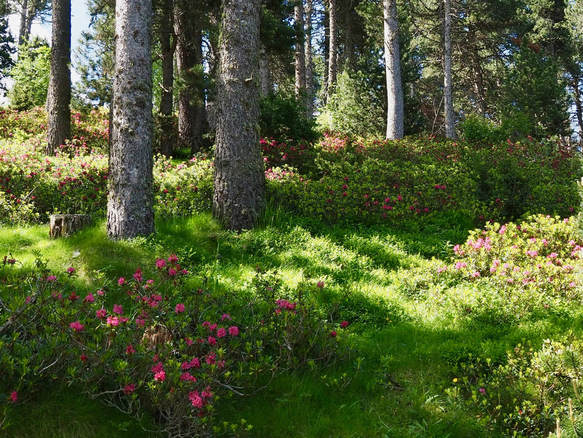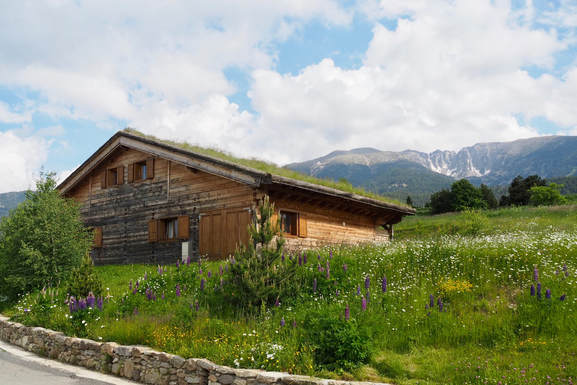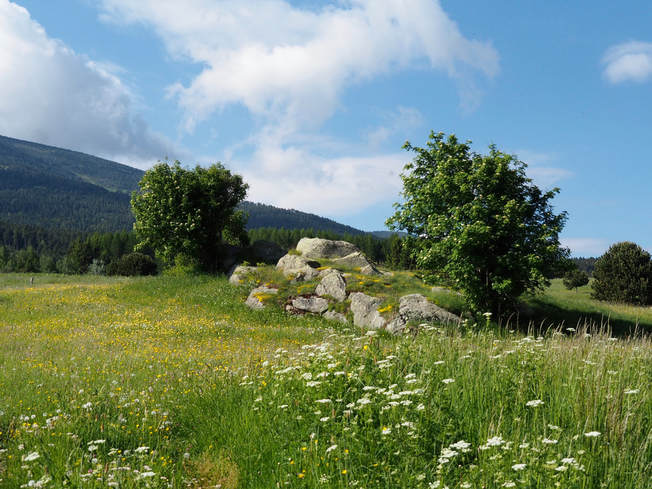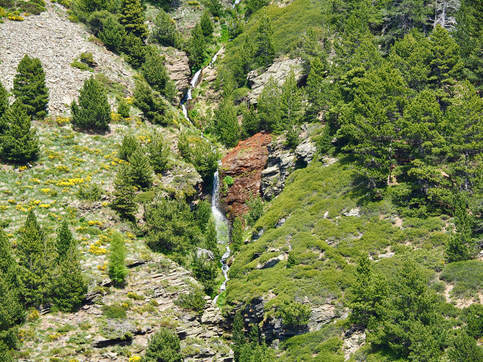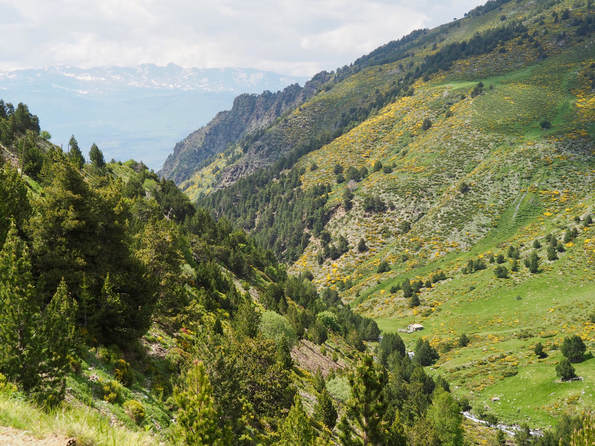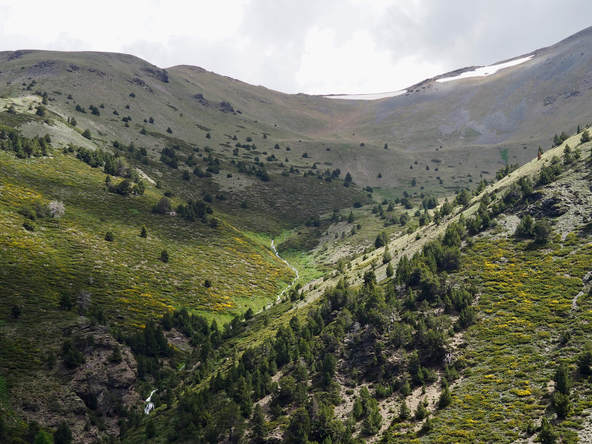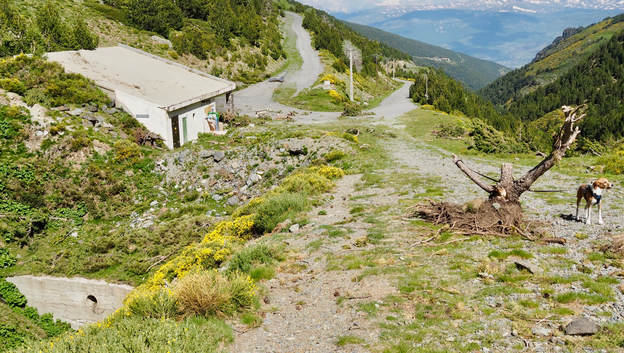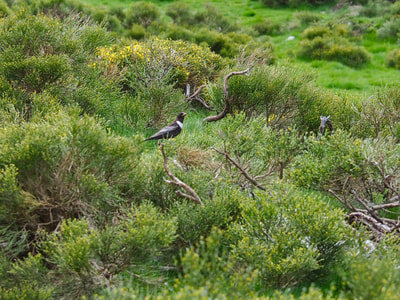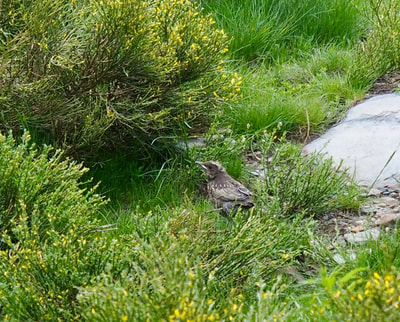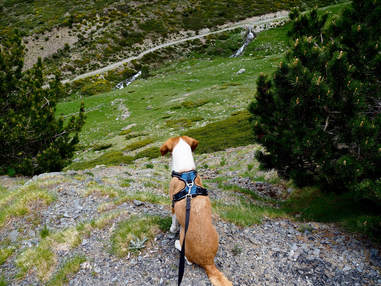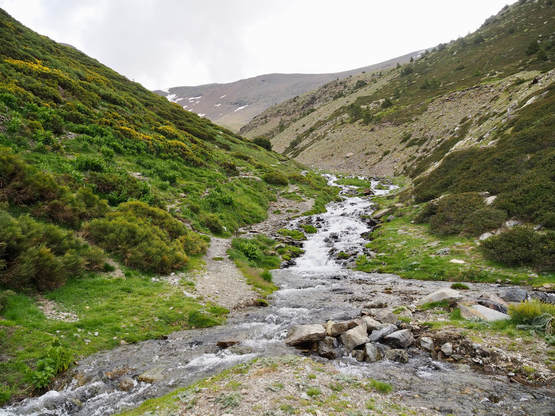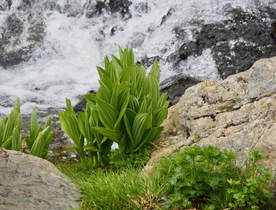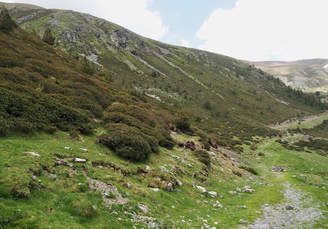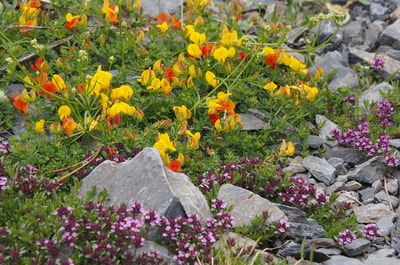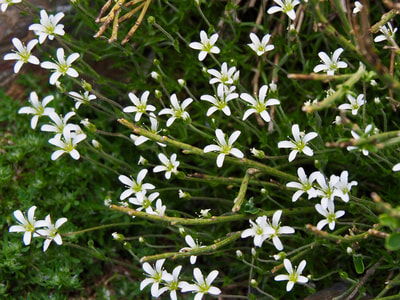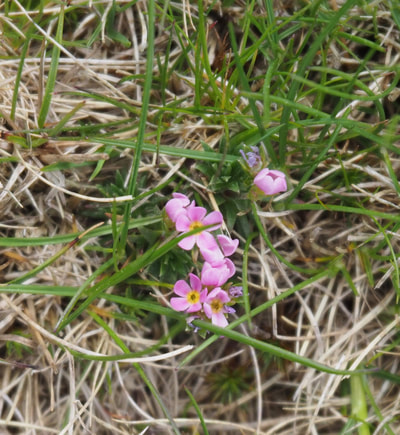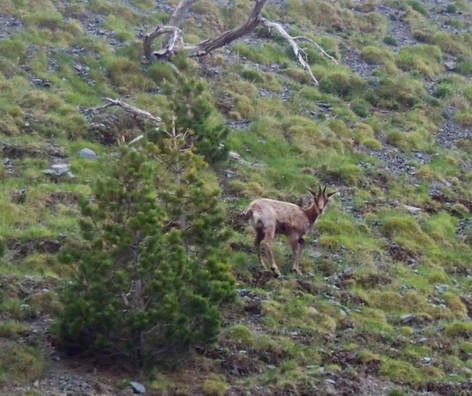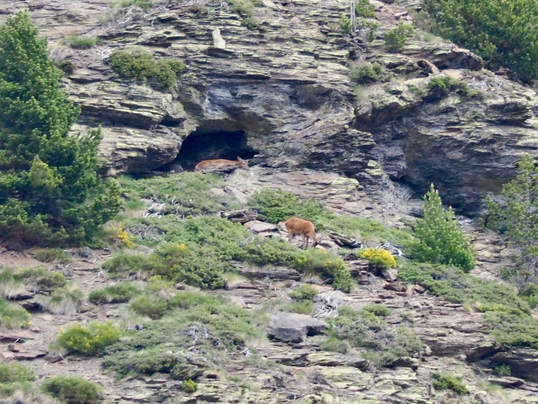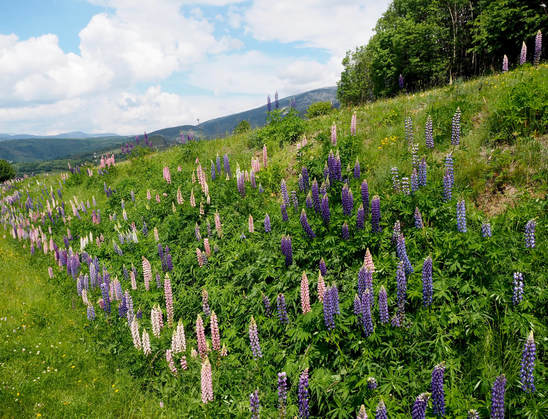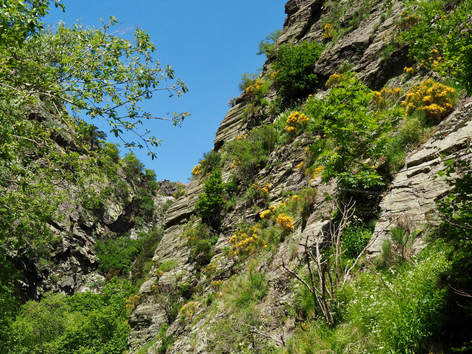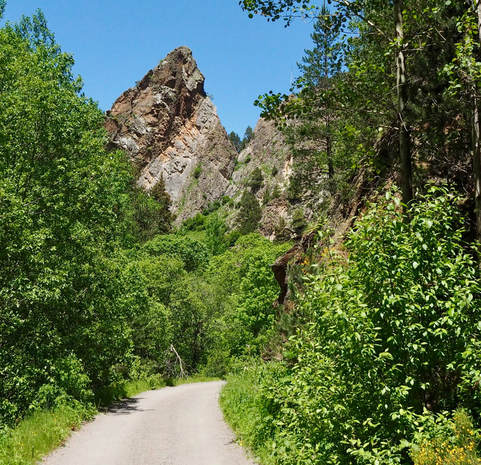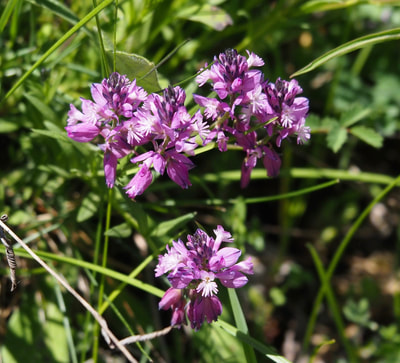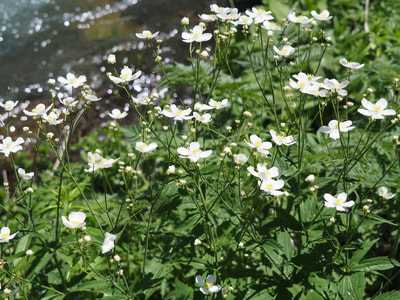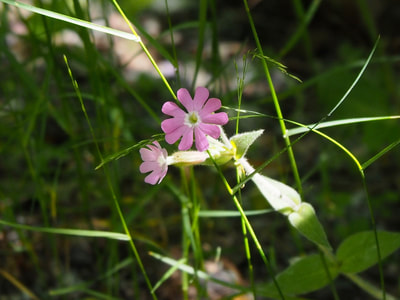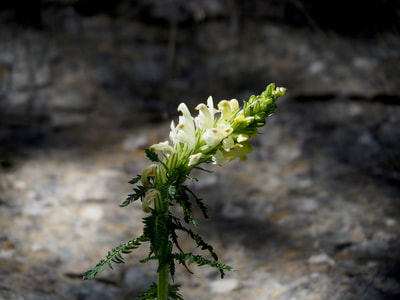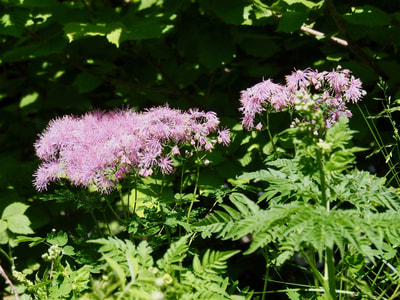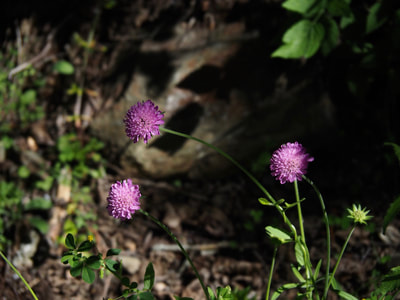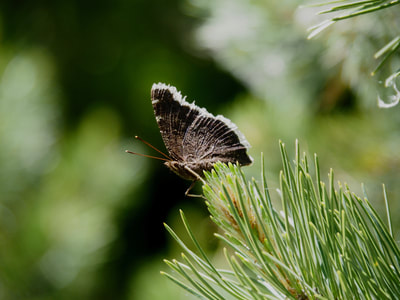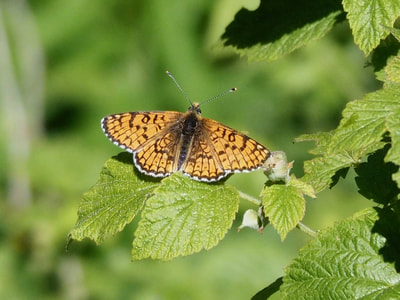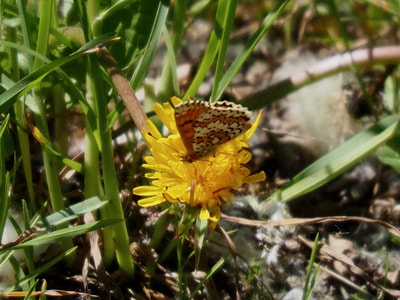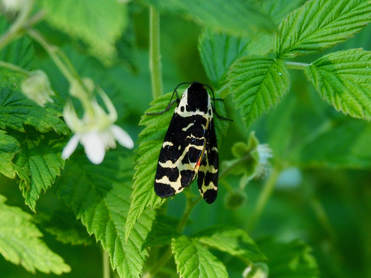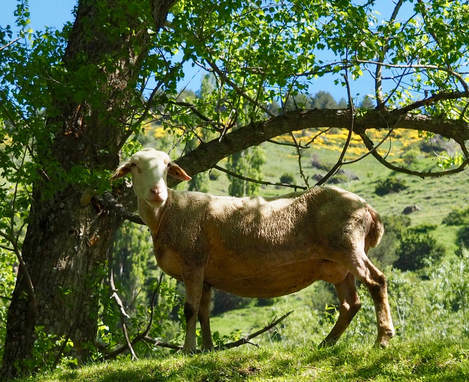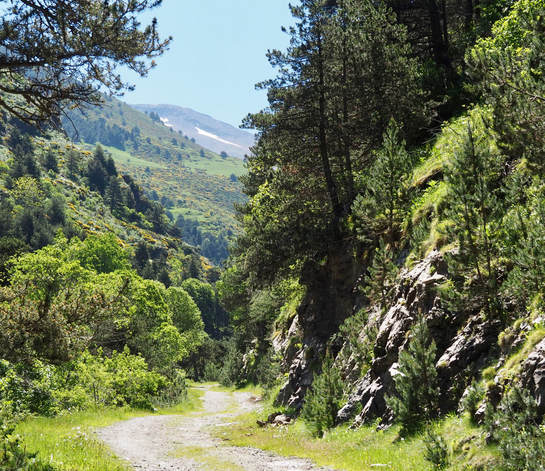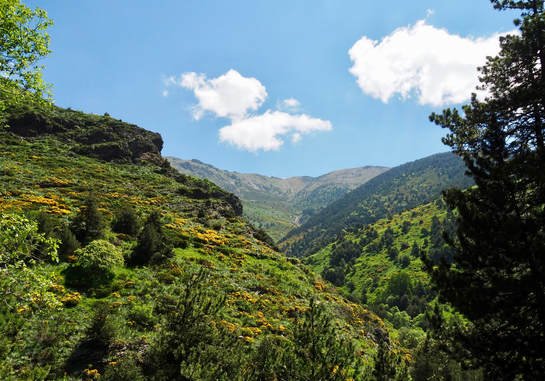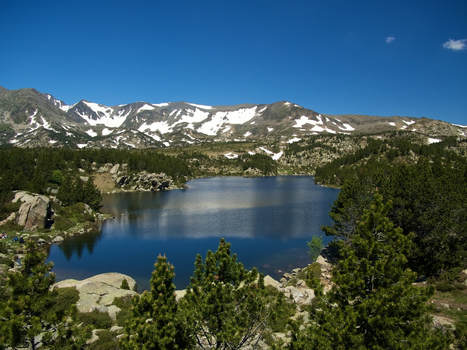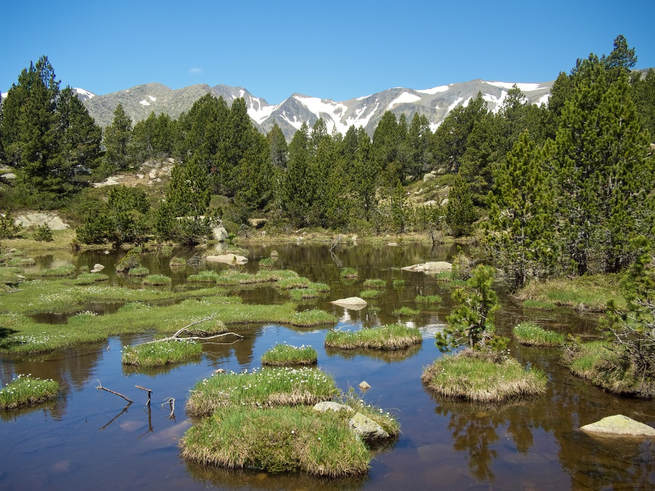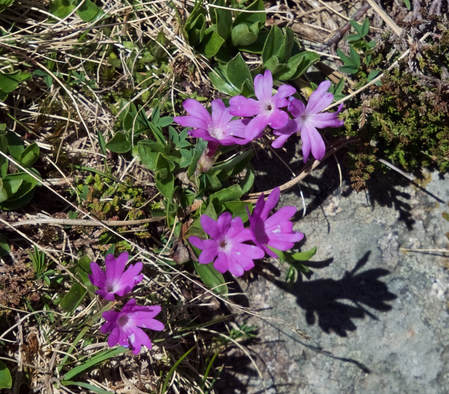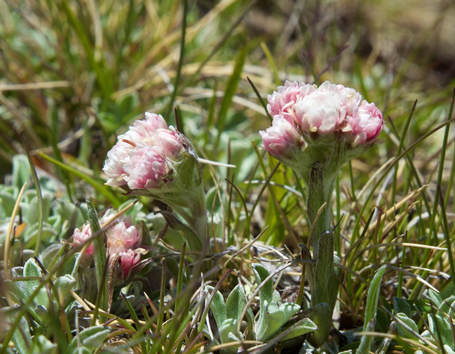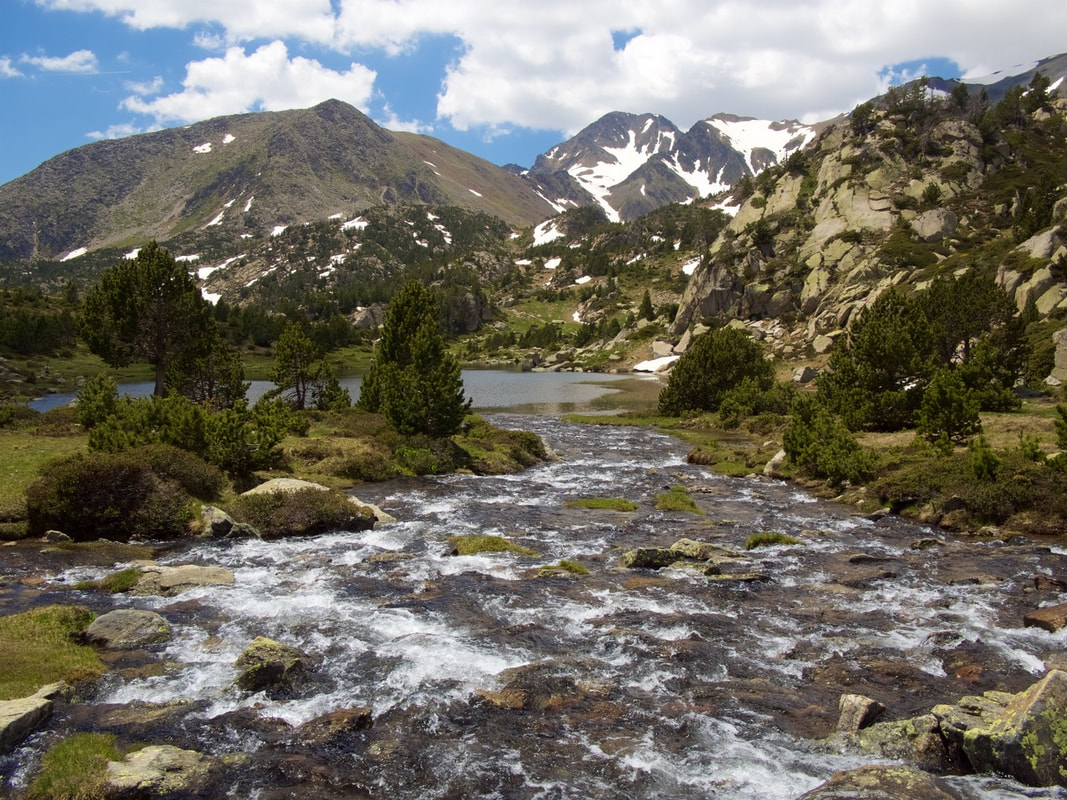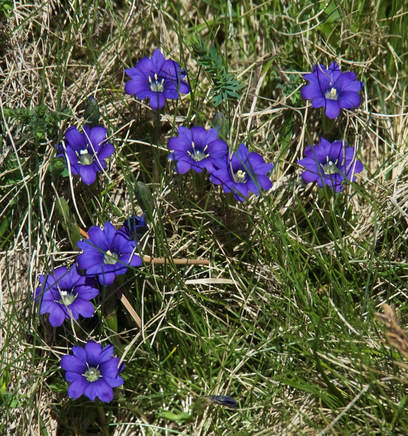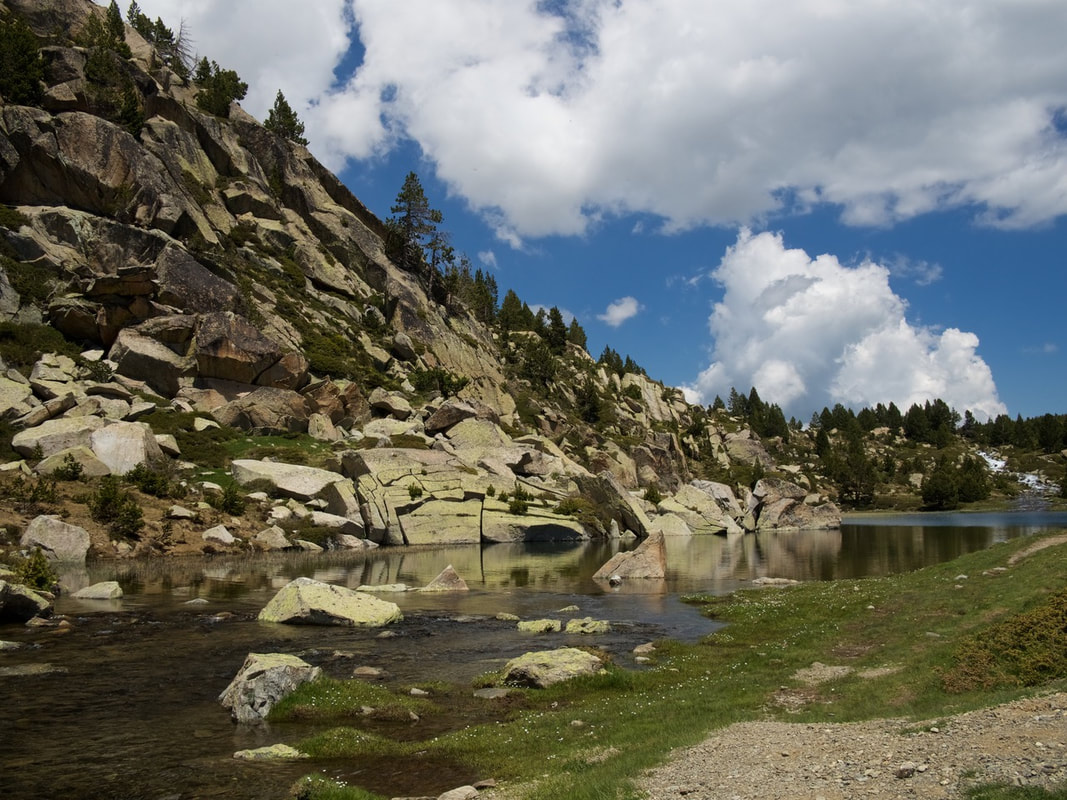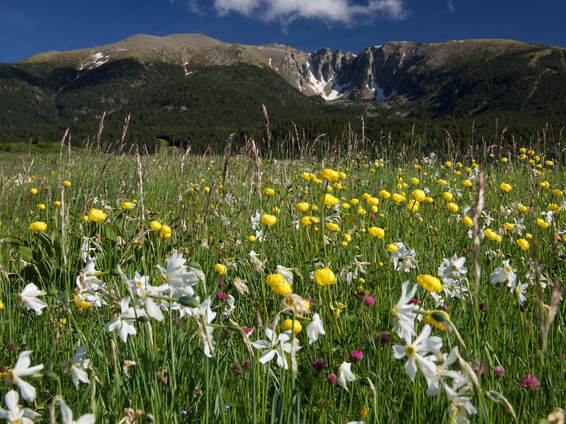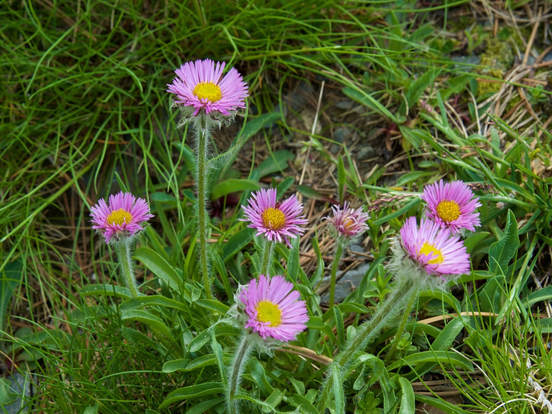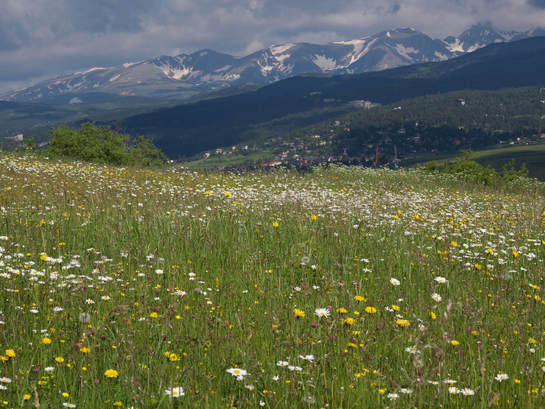For me, though, it wasn't just the flowers that made this place so special. On a small mound in the first meadow you get to, there's a cluster of rocks. They cry out to be sat upon, which is exactly what I'd done the first time I saw them, Day 1. After arriving at the chalet early, to do a quick recce of the locale, I'd mused over who else, over the centuries, might have sat in this same spot, listening to skylarks, breathing in the fresh mountain air and soaking up the views.
Because of my dog, and the convenience of such quiet tracks so close to the chalet, I'd strolled here several times each day after that - often early morning and evening; rarely meeting anyone. Thoughts of my father often surfaced; he would have been in his element. By the last day, it now felt like home and, for some reason, those rocks drew my eye every time I passed them. Bathed in sunshine, they, the flowers, grasses, butterflies, birdsong, and resident families of whinchats, kestrels and choughs, combined to lend this place an ambiance of serenity I haven't encountered elsewhere.
Here and there in the dappled shade, rhododendrons were beginning to open; I was sorry not to see them at their best, but if they had been out the spring flowers would have gone over. You can't have everything. In one glade, I came across an interesting, single orchid, which looked different from the purples and pinks in the meadows and verges further back. (Subsequent attempts to identify it from my photo have been unsuccessful; none of us can decide if it's a common spotted, heath spotted, or a hybrid; our books and the internet don't agree!)
(Mystery orchid on the right. Click to enlarge.)

